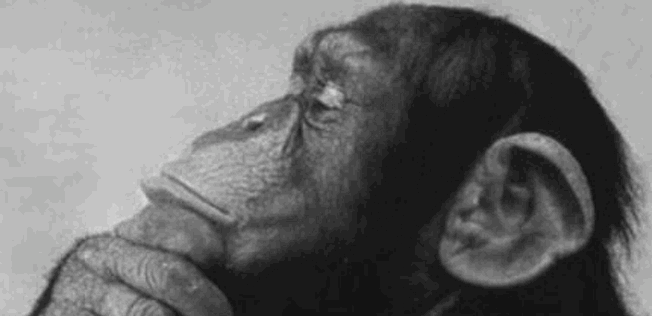In the most recent 2015 issue of Christian Spirituality and Science published by Avondale College (a Seventh-day Adventist institution under the South Pacific Division of Seventh-day Adventists) there are three articles, all of which appear to challenge the firm position of the Seventh-day Adventist Church on the literal nature of the creation week described in Genesis. The authors of these papers suggest that the church should put aside such antiquated 19th century notions and accept or at least tolerate the idea that life has existed and evolved on this planet over the course of at least a couple billion years or so.
Read MoreThe failure of the Adventist Accrediting Association
Last week, the board of AAA, chaired by Lisa Beardsley-Hardy, voted to certify that La Sierra University is uniquely Adventist in its identity, and is adequately fulfilling its religious mission. This certification lasts for three years, through 2016. This is an appalling failure on the part of AAA.
Read MoreEternal power vs. blind chance, part II
A careful look at the probability of Darwinian evolution unequivocally denies the possibility of progress. If God’s works are made manifest in this way, though, how is it that many evolutionists, even those that are good at math, don’t see this as a fatal flaw in their theory? First, they see the action of natural selection as a mechanism that provides them with a loophole. If natural selection is strong enough, according to the theory, it will drive things forward and progress will be inevitable.
There’s a catch, though: the probability calculations show that Darwinian mechanisms cannot produce the proper mutations. Natural selection is simply the process by which those new mutations are fixed in the gene pool. If the necessary new mutations never arise, natural selection has nothing to work with and therefore cannot be the mechanism by which progress is made. (Michael Behe’s book The Edge of Evolution is a must-read for anyone interested in this topic. All of the data ever collected on mutations confirm that the Darwinian processes of mutation and natural selection are subject to the laws of probability.)
Another common objection to the probability hurdle can be demonstrated by the following conundrum: if I multiply out all the statistical probabilities that resulted in the uplift, erosion and current form of Mt. Everest, the existence of the mountain would appear to be a statistical impossibility. This must prove that either statistically impossible phenomena happen regularly, or that statistics can be applied only to events that have not yet happened, right?
This counterargument belies a misunderstanding of the specificity of the arrangement of DNA nucleotides in the cell. The DNA in the cell is more like the form of Mt. Rushmore than Mt. Everest: It means something. If something is complex but not specified, such as the arrangement of blades of grass in my lawn or the placement of the cracks in the rocks that make up the peak of Mt Everest, there is no information present. In other words, when we apply the word “specified” to DNA sequences, we are saying that not just any arrangement of nucleotides will suffice for a given task. It must be a specific arrangement.
One idea kicked around in evolutionary biology is that there are many possible DNA sequences that could potentially get a job done, thereby limiting the specificity required for life to function. This approach doesn’t help, however. Even if there were billions of functional variations of the simplest genome known to science, its development by Darwinian mechanisms would be statistically impossible. A useful analogy is scrabble letters. There may be many ways to use all the letters in the bag to make a meaningful paragraph, but we would be extremely surprised if we dumped the letters out of the bag, and they formed one of those meaningful sequences.
Once the issue of specificity is clarified, Darwinists tend to argue that necessity must play some role in the development of life (1). Necessity, in this context, refers to chemical bonding preferences (2). If you have sodium ions and chloride ions in water, and you boil away all the water, the ions will, by necessity, form table salt. The argument, then, is that the laws that govern chemistry caused living organisms to come together and evolve.
The most basic fallacy in this argument is that chemical bonding preferences create repeating sequences of atoms and therefore cannot create information. Imagine trying to type a message on a computer that only allowed letters to fall in alphabetical order. Written communication would be impossible under such constraints.
Finally, after natural selection has been assigned to its proper place, the role of specificity has been properly understood, and necessity has been deemed unhelpful in information production, the last argument in favor of Darwinism is that science must, under all circumstances and against all odds, adhere to methodological naturalism.
Creationists have often been accused of allowing philosophy to warp their scientific views. When the data are allowed to speak, however, the true dogmatism is revealed. Darwinian evolution—though founded on the negation of God’s action—demands miracle after miracle of incalculable magnitude to succeed.
1. In general, Darwinists deny the action of necessity in evolutionary theory (Michael Shermer, “The Role of Contingency and Necessity in Evolution” in Nature of Nature). I’ve only heard it used in debates as a position of retreat when the idea of the power of natural selection has succumbed and specificity has been correctly understood. 2. Some might argue that I’ve set up a straw man by limiting the argument to chemistry, and that there might be other mechanisms at work on a different level. My reply is that no one has even remotely demonstrated such a mechanism, and conjecture is a poor replacement for data.

